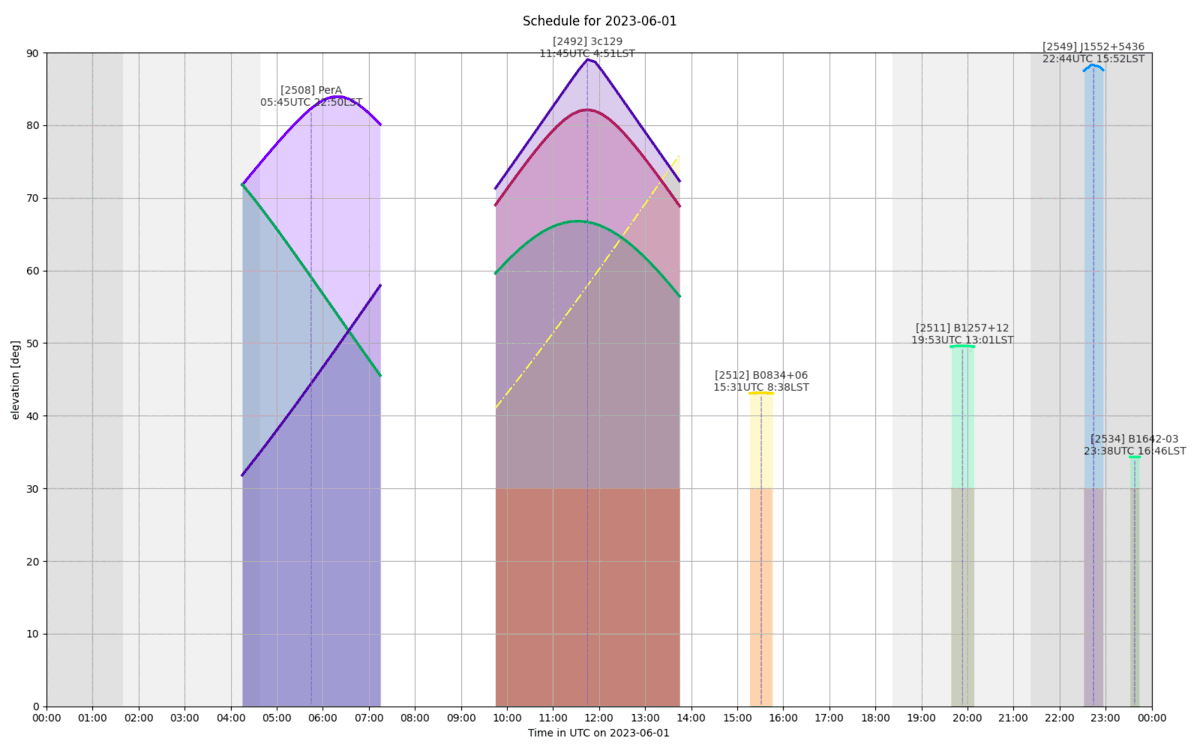Daily Image
12-06-2023Dynamically Scheduling LOFAR Cycle 20!
| Submitter: | Team Ruby and Gemma Janssen |
| Description: | One of the major challenges of the LOFAR support staff is to fill the LOFAR telescope calendar efficiently with approved observation programs. The scheduling process has to take into account many parameters, such as project priority, source visibility, antenna availability, maintenance activities like mowing and repairs and many more, sometimes unexpected, events. Needless to say that this puzzle creates a heavy burden on the Observatory staff responsible for carrying out the observing program. To alleviate that burden, the idea to automate that process to a large extent has been floating around for quite some years. With the development of the new specification and scheduling tool TMSS, the scheduling automation has been taken along explicitly as a requirement. It was also decided to call the resulting functionality the "Dynamic Scheduler". Dynamic, because the scheduling process will be automatically rerun whenever a constraint changes, eventually. Such a change can be a station dropping out, a trigger caused by a cosmic event that requires LOFAR to observe that target of opportunity, or some other event that changes the capability of the telescope. After a long period of extensive testing, the important decision was made to start using the dynamic scheduler in TMSS for LOFAR observing cycle 20, which started on June 1st. This decision is a major milestone for the dynamic scheduler, and we are thrilled that it will be used in LOFAR for real now! In this daily image we show some of the plots that are part of the automated scheduling process. They show the day-schedule for LOFAR between June 1st and June 5th 2023 resulting from automatically scheduling a batch of observations. Time is on the horizontal axis and source, or rather pointing, elevation at station CS002 on the vertical axis. The Dynamic Scheduler intends to relieve the burden on everyone involved in the day-to-day planning of LOFAR observations. We are looking forward to extend it to include other, new constraints such as, for example, the state of the ionosphere which has a major impact on the data quality of a low-frequency radio telescope such as LOFAR (comparable to optical seeing for a visible-light telescope). |
| Copyright: | ASTRON |
| Tweet |  |
